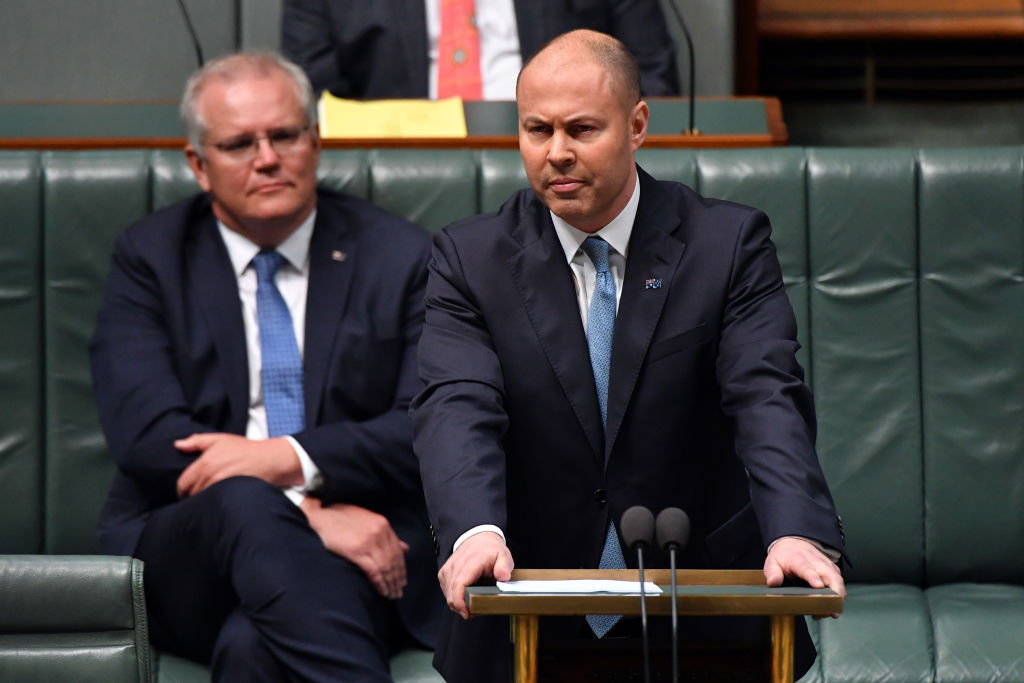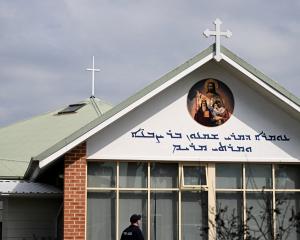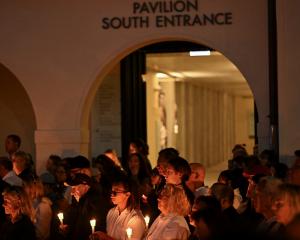
In the past week or so, big, multibillion-dollar initiatives have been announced on a daily basis, from an apprenticeship initiative to giving the regions and tourism a cash injection.
The bringing forward of already legislated tax cuts, due in 2022, has been flagged for months.
Even so, the spend-a-thon that will see the budget deficit balloon to a record $213.7 billion and government debt exceed $1 trillion for the first time is aimed at digging the economy out of recession and getting people back into work.
The budget is forecasting a huge acceleration of economic growth in the next financial year, from a contraction of 1.5 per cent in 2020/21 to brisk 4.75 per cent expansion.
From there on growth is expected to hum at a rate of 2.75 per cent to three per cent, something that hasn't been seen for a while.
There is also hope that unemployment is not far from its peak, with Treasury now predicting a top of eight per cent later this year, rather than nine per cent, and by 2023/24 falling to 5.5 per cent.
But there is a big assumption to this somewhat healthier outlook, given how deep Australia's first recession in three decades has been.
It relies on there being a COVID-19 vaccine by the end of 2021.
Mr Frydenberg explained if a vaccine is found six months earlier, that would give a $34 billion boost to the economy.
But he also warned if there was a second or third wave of virus cases in Australia, that could hurt the economy by $55 billion.
"There is a lot of uncertainty in this economic environment, it's an unprecedented time," he told reporters.
"We are leaving no stone unturned to get access to the vaccine."
In the meantime, the government is racking up a huge bill trying to keep life on an even keel in these uncertain times.
Main points
ECONOMY
* Budget deficit of $213.7 billion in 2020/21
* Deficit narrows to $112 billion in 2021/22, $87.9 billion in 2022/23 and $66.9 billion in 2023/24
* Commonwealth net debt to rise to $703.2 billion in 2020/21 before hitting $966.2 billion in 2023/24
* Economic growth to fall by 1.5 per cent in 2020/21 before expanding by 4.75 per cent in 2021/22
* Unemployment rate of 7.25 per cent in 2020/21, before falling to 6.5 per cent the following year
* Inflation as measured by CPI to be 1.75 per cent in 2020/21
TAXATION
* Extra $12.5 billion in personal income tax relief over the next 12 months
* In 2020/21, low and middle income earners will get tax relief of up to $2,745 for singles and up to $5,490 for dual income families
* When the plan is fully rolled out in 2024/25 around 95 per cent of taxpayers will have a marginal tax rate of 30 per cent or less
* A $2 billion research and development tax incentive to apply from July 1, 2021
BUSINESS
* From budget night to June 20, 2022, businesses with a turnover up to $5 billion will be able to deduct the full cost of eligible depreciable assets of any value in the year they are installed.
* Loss 'carry-back' will also be available to around one million companies, with losses incurred up to 2021/22 carried back against profits made in or after 2018/19.
* Changes to fringe benefits tax
* Small and medium businesses can access up to 10 tax concessions
HOUSING
* An extra 10,000 places in 2020/21 under the First Home Loan Deposit Scheme to buy a new home or newly-built home
* These first home buyers can secure a loan with a deposit of as little as five per cent, with the government guaranteeing up to 15 per cent of a loan
* $1 billion increase in the government guarantee to the National Housing Finance and Investment Corporation to support more affordable housing
INFRASTRUCTURE
* Boosting infrastructure spending to $110 billion over the decade
THE BUSH
* $328 million to help agricultural exporters and the recovery from drought, bushfires and COVID-19
* Digital platforms to make it easier for exporters to access overseas markets
* $550 million regional package to support tourism, rural health workforce, manufacturing and technology
YOUNG WORKERS
* JobMaker hiring credit to support around 450,000 people aged between 16 and 35 get into work, at a cost to the budget of $4 billion
* The credit of up to $200 a week will be available to employers for each new job they create over the next 12 months
* $1 billion JobTrainer fund will support up to 340,700 free or low-fee training places
* $1.2 billion to subsidise apprentice wages
WOMEN
* $240.4 million package to deliver job opportunities, support parents and increase participation in STEM industries
HEALTH
* $4.9 billion in health measures to deal with the coronavirus pandemic, including support for hospitals, protective equipment and vaccines and treatments
* $750 million for COVID-19 testing
* $112 million to continue Medicare-funded telehealth
* Extra $746.3 million to support senior Australians in aged care, workers and providers to respond to the pandemic
PENSIONERS
* $2.6 billion for two additional payments of $250 to pensioners and other eligible recipients
ENVIRONMENT
* $249.6 million over four years to modernise recycling infrastructure, reduce waste and recycle more
* $47.4 million ocean health package
* $29.1 million to clean up contaminated land
SUPERANNUATION
* Ability to keep your superannuation fund when you shift employers, effectively "stapling" the fund to the worker
SECURITY
* Extra $201.5 million to deliver a cyber security strategy, with new investment in training












